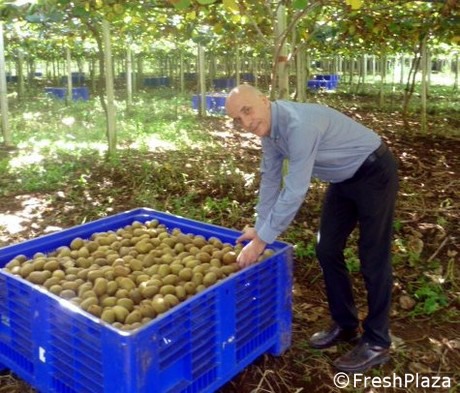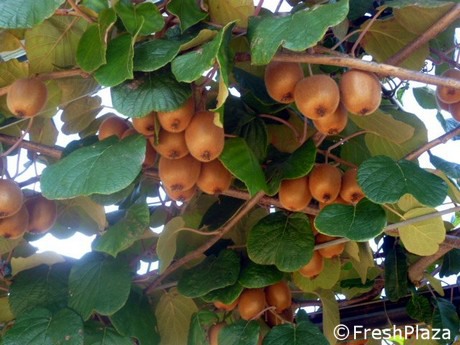In order to take stock of the 2018 southern hemisphere kiwi campaign and the expectations for the 2018/19 season in the northern hemisphere, FreshPlaza interviewed Marino Silva, Zespri’s Italy Market Manager.
 Marino Silva
Marino Silva
With regard to the decreased Italian kiwi production, the manager confirms, “Climatic conditions reduced the expected volumes of green kiwi. Even though the volumes this year do not correspond to the actual Italian potential, our country is the first global kiwi producer for 2018 also, and Zespri is once again the market leader”.
On the other hand, there is the yellow pulp variety, “The Italian SunGold kiwi season production is currently undergoing with regular sales, while the Zespri Green season is expected to be similar as the last one. The volumes of Zespri Green are the same as in 2017, whereas the volumes of SunGold particularly increased thanks to different factors. This because, first of all, larger surfaces have been devoted to the SunGold; then, because of the feeling of perceived novelty that surrounds this produce which aroused customers’ curiosity; and finally, because of the unique sweet SunGold taste which satisfies a larger audience than the Green variety”.

The 2018 season of the southern hemisphere productions showed very positive results for the yellow kiwi, as well. Marino Silva claims, “With regard to the SunGold variety, the southern hemisphere campaign had a pretty standard marketing phase, even though the quantity strongly increased. The demand for Zespri SunGold kiwi is constantly growing, especially thanks to the Italian produce which reaches the markets right in time, precisely when the northern hemisphere kiwi marketing campaign ends”.
“Regarding the Zespri Green, the overlapping of the produce with the new Italian season reduced the volumes marketed in this period, which resulted in the presence of slightly more produce towards the end of the season thus delaying the conclusion of the marketing phase by a few more weeks than expected”.
The role of Greece
In order to understand the growing concerns regarding the competition coming from Greek kiwis, it is necessary to point out a few things.
Marino Silva states, “Greek kiwi is usually medium-quality produce (it improved a lot over time), cheaper than the Italian produce. Further, the marketing of the Greek kiwi starts one month earlier than the Italian one. Therefore, it is mainly because of this that Italy imported a considerable amount of volumes of that, in the October/November period”.
“The quality of Italian kiwi and the preservation technology are definitely better than in any other country – dry substance parameters and Brix degree included”.

Zespri developed its own integrated operating model (Zespri System), which follows the entire kiwi production process, from the harvesting to the marketing. This system allows achieving high-quality standards as constant checks are carried out throughout the supply chain. In this way, it is possible to trace the origin of every single tray of kiwis.
Additionally, Zespri System supports the production and the marketing of the produce with the same qualitative standards: Zespri’s kiwis are, indeed, packaged, preserved and shipped in a manner that they reach the end-customer in perfect conditions.
The manager concludes, “The Zespri System’s high-quality standard affects the produce price. However, Zespri knows that the loyal customer is inclined to pay a higher price if the quality of the produce is excellent”.
